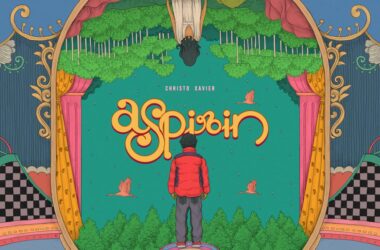This guide explores the best time to visit Ayodhya, season by season, with insights into weather, festivals, crowd levels, and travel tips. The best time to visit Ayodhya is from October to March, when the weather is cool, festive, and ideal for exploring temples, ghats, and heritage sites. Ayodhya, the sacred city on the banks of the Sarayu River in Uttar Pradesh, is a spiritual magnet for millions of pilgrims and travelers. Revered as the birthplace of Lord Rama, Ayodhya offers a rich blend of mythology, devotion, and cultural heritage. Whether you’re drawn by the grandeur of Ram Janmabhoomi, the serenity of Ram Ki Paidi, or the festive glow of Deepotsav, timing your visit can make all the difference.
🌤️ October to March: The Ideal Season
Why it’s the best time:
- Pleasant weather ranging from 12°C to 30°C.
- Clear skies and cool mornings perfect for temple visits and riverfront walks.
- Peak season for festivals and cultural events.
Key highlights:
- Deepotsav (October–November): Ayodhya lights up with millions of diyas, cultural performances, and spiritual fervor.
- Ramayana Mela: Celebrates the epic with plays, music, and exhibitions.
- Makar Sankranti (January): Devotees take holy dips in the Sarayu River.
- Mahashivratri (February–March): Nageshwarnath Temple becomes a hub of activity.
Travel tips:
- Book accommodations early during Deepotsav and winter holidays.
- Carry light woollens for chilly mornings and evenings.
- Ideal for photography, boat rides, and heritage walks.
☀️ April to June: Summer Season
Why to be cautious:
- Temperatures soar to 35°C–45°C, making midday travel uncomfortable.
- Fewer tourists, but intense heat can limit outdoor activities.
Key highlights:
- Rama Navami (March–April): Celebrates Lord Rama’s birth with grand processions and temple rituals.
- Hanuman Jayanti: Hanuman Garhi sees large gatherings and special prayers.
Travel tips:
- Start your day early to avoid peak heat.
- Stay hydrated and wear breathable cotton clothing.
- Choose accommodations with air conditioning and shaded courtyards.
🌧️ July to September: Monsoon Season
Why it’s offbeat:
- Rainfall brings lush greenery and a mystical charm to Ayodhya.
- Fewer crowds and lower hotel rates.
- Some outdoor activities may be disrupted by showers.
Key highlights:
- Shravan Month (July–August): Devotees flock to Shiva temples like Nageshwarnath.
- Janmashtami (August): Celebrations of Lord Krishna’s birth add vibrancy to the city.
Travel tips:
- Carry umbrellas and waterproof footwear.
- Be cautious near riverbanks during heavy rains.
- Ideal for those seeking solitude and spiritual immersion.
🗓️ Month-by-Month Breakdown
| Month | Weather | Crowd Level | Key Events |
| October | Cool & dry | High | Deepotsav preparations |
| November | Crisp & festive | Very high | Deepotsav, Kartik Purnima |
| December | Cold mornings | Moderate | Peaceful temple visits |
| January | Cold & clear | Moderate | Makar Sankranti |
| February | Pleasant | High | Mahashivratri |
| March | Warming up | High | Rama Navami |
| April | Hot | Moderate | Hanuman Jayanti |
| May | Very hot | Low | Off-season travel |
| June | Hot & humid | Low | Pre-monsoon calm |
| July | Rainy | Low | Shravan rituals |
| August | Rainy & festive | Moderate | Janmashtami |
| September | Humid | Moderate | Ganesh Chaturthi |
Sources: Holidify Travel Guide, Ayodhya Dham Travel Guide
🧭 Planning Your Visit
Ideal duration: 2–3 days to cover major temples, ghats, and cultural sites.
Must-visit spots:
- Ram Janmabhoomi Temple
- Hanuman Garhi
- Kanak Bhawan
- Ram Ki Paidi
- Guptar Ghat
- Dashrath Bhavan
- Nageshwarnath Temple
Best time for photography:
- Early mornings at Ram Ki Paidi
- Sunset boat rides on the Sarayu
- Night views during Deepotsav
🛍️ Seasonal Shopping & Cuisine
- Winter: Try hot pedas, khurchan, and temple prasad.
- Summer: Refresh with aam panna and lassi.
- Monsoon: Enjoy spicy street snacks like samosas and pakoras.
🚗 Travel Tips
- Connectivity: Ayodhya is well-connected by road and rail; nearest airport is Ayodhya International Airport.
- Local transport: E-rickshaws and taxis are widely available.
- Safety: Ayodhya is safe for tourists; follow temple protocols and respect local customs.
Final Thought
The best time to visit Ayodhya is when the city’s spiritual energy, cultural vibrancy, and natural beauty align—October to March offers this perfect blend. Whether you’re attending Deepotsav, meditating by the Sarayu, or exploring ancient temples, Ayodhya promises a soulful experience that transcends seasons.







